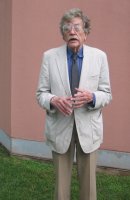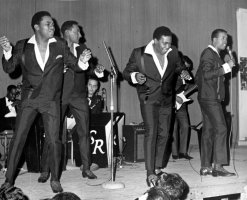Online Magazine
Recent Posts
- Safeguard your Cellphone Photos
- Black & White to Color – Instantly
- Wearing Many Hats
- Video Roundup
- Rescuing Your Blurry Pictures
- Showing Their Age
- What is Your Angle?
- Panorama Photos
- Humorous Photos
- Close Ups
- Fisheye Pictures
- Photo Antiquities
- Printing Big
- Appreciating Scale
- Celebrity Sightings
Tags
More Places to Go
- Free "How-To" Books “How To” books for popular cameras 0
- Vist Us on Facebook keep in touch with us on Facebook 2
Archives
- July 2023 (1)
- March 2023 (2)
- February 2023 (1)
- December 2022 (1)
- October 2022 (1)
- September 2022 (8)
- August 2022 (9)
- July 2022 (1)
- June 2022 (1)
- June 2021 (1)
- May 2021 (1)
- March 2021 (5)
- February 2021 (4)
- January 2021 (2)
- April 2019 (1)
- March 2019 (1)
- February 2019 (1)
- October 2018 (2)
- April 2018 (1)
- March 2018 (4)
- February 2018 (1)
- November 2017 (1)
- August 2017 (1)
- June 2017 (1)
- April 2017 (1)
- March 2017 (5)
- February 2017 (2)
- January 2017 (1)
- October 2016 (1)
- September 2016 (1)
- August 2016 (1)
- July 2016 (1)
- May 2016 (1)
- April 2016 (1)
- March 2016 (2)
- February 2016 (1)
- January 2016 (2)
- December 2015 (1)
- November 2015 (1)
- October 2015 (3)
- April 2015 (1)
- March 2015 (5)
- February 2015 (1)
- January 2015 (4)
- December 2014 (2)
- November 2014 (5)
- October 2014 (2)
- September 2014 (1)
- August 2014 (2)
- July 2014 (1)
- May 2014 (1)
- April 2014 (5)
- March 2014 (5)
- December 2013 (2)
- November 2013 (18)
- October 2013 (1)
- September 2013 (1)
- August 2013 (1)
- July 2013 (1)
- June 2013 (3)
- May 2013 (1)
- April 2013 (2)
- March 2013 (1)
- February 2013 (1)
- January 2013 (1)
- December 2012 (1)
- November 2012 (2)
- October 2012 (2)
- September 2012 (5)
- August 2012 (2)
- July 2012 (1)
- June 2012 (1)
- May 2012 (1)
- April 2012 (4)
- March 2012 (1)
- February 2012 (1)
- January 2012 (3)
- December 2011 (1)
- November 2011 (3)
- October 2011 (1)
- September 2011 (2)
- August 2011 (2)
- June 2011 (3)
- May 2011 (4)
- April 2011 (8)
- March 2011 (8)
- February 2011 (10)
- January 2011 (6)
- December 2010 (11)
- November 2010 (14)
- October 2010 (6)
- September 2010 (12)
- August 2010 (2)
- July 2010 (4)
- June 2010 (3)
- May 2010 (1)
- April 2010 (1)
- March 2010 (2)
- February 2010 (1)
- January 2010 (1)
- December 2009 (1)
- November 2009 (2)
- October 2009 (2)
- September 2009 (1)
- August 2009 (3)
- July 2009 (2)
- June 2009 (1)
- May 2009 (2)
- April 2009 (1)
- March 2009 (2)
- February 2009 (1)
- January 2009 (3)
Earth Day 2012
21st April 2012
… 42 years and counting
|
Tomorrow marks the 42nd anniversary of the first Earth Day. (Note: I’ve redated this article so that it corresponds to an April 22 date.) This is a personal recollection of some of the memories that have followed me since this global movement was in its infancy. I also take a short look at both conventional film and digital photography to describe their effect on the environment. |
 |
Usually my daily thoughts are centered around publishing, software, grandkids or one of many other diverse topics. But as April arrives each year, a newspaper article here or a radio broadcast there reminds me of Earth Day.
Stick with me for a few paragraphs as my mind drifts back a bit.
From the time I first started reading his black humor, novelist Kurt Vonnegut has been one on my favorite authors. He died in April 2007 shortly before the original version of this article was published.
The news coverage of his life and death took me back to the late 60’s when I was a student at the University of Michigan (U of M) in the city of Ann Arbor. Vonnegut was asked to be “Writer in Residence” at the University. As one of the most widely read authors of the 1960’s generation, he was sure to have a large, welcoming audience among would-be writers studying at the U of M.
He sometimes frequented a small, local campus restaurant called “The Brown Jug” where he’d have breakfast and smoke lots of cigarettes. Back then, it was popular lore that Vonnegut declared smoking to be the slowest form of suicide.
My wife Kris, then a student and part-time waitress, was also a Vonnegut reader. On occasion, she would wait on him in the restaurant. She admitted, that owing to her hearing difficulty, she was not a very good waitress and therefore frustrated the celebrated writer with her (lack of) service. More to the point, his purpose on campus as writer in residence ended abruptly when he left prematurely declaring something to the effect: “I’m leaving Ann Arbor since I have nothing much to teach you about writing.” So it goes.
 Kurt Vonnegut in 2004 photo courtesy of Colleen Taber |
||
To put things in the proper perspective, 1970 was a very vibrant, exciting and yet conflicted era. I’m reminded of Charles Dicken’s quotation in my high school year book which aptly describes the period: “it was the best of times and it was the worst of times….we were all going direct to heaven, we were all going direct the other way”. This was the period of Viet Nam and Kent State, living off the earth and making peace, hippies and long hair. We were contemporaries of heavy metal, Motown, James Taylor, Woodstock and The Beatles music. With this as a backdrop, we happen upon the Earth Day 1970 teach-in at the U of M.
Not long after Vonnegut’s departure from the campus, we were treated to a free music concert. The well-known folk song artist Gordon Lightfoot came to town to perform for more than 12,000 screaming students in one of the large stadiums at the University. Gord had had been drawing large audiences around the US, Canada and Europe with his classic Canadian Railroad Trilogy (click for lyrics), a poetic ballad describing the building of the railroads across Canada and the difficult tradeoffs between developing the economy and keeping the land pristine for the future. His music was great back then and to this day, I remain a Lightfoot fan. I was so much the fan that a few years ago I traveled to Las Vegas (by myself since no family member wanted to accompany me) to hear him in concert. And I ended up staying for two of his performances. Would you believe that I even have a life size poster of Gord which was gifted to me by the advertising manager at the Orleans Casino?
Anyway, traveling back to 1970, we understood that Lightfoot’s appearance was part of what was to be part of the first Earth Day teach-in, a gathering of some 50,000 in Ann Arbor to discuss, educate and find solutions to environmental problems created by the earth’s inhabitants. From all of the excitement and the energy which went into the production of the first Earth Day teach-ins, many of us believed that we were on the verge of saving the environment.
As an economics student, I was counting on a future career that would revolve around conservation, ecology and recycling. I was deeply serious about this course of study and studied writings from the likes of educators and humanists Kenneth Boulding, Buckminster Fuller and E.F. Schumacher and took courses such as remote sensing of the environment and cost-benefit analysis.
My great enthusiasm for all things environmental waned some time after graduating with a degree in Natural Resource Economics. It was fully a year later that I was still trying to find a job in this nascient field. Instead, I ended up in the computer and publishing business. So it goes.
As I usually stay away from public discussions about politics, I won’t comment on how well or how poorly the earth’s inhabitants have done to improve the environment over the past 42 years. However, like others, I have observed a very large and urgent movement in recent years to resurrect many of the same or similar ideas from these earlier decades that call for a change in our lifestyles.
In fact, last week we took a few of our grandkids to see Lorax, a new movie based on Dr Seuss’ book. It describes a planet where all of the trees have been clear cut – no trees left. Now everyone depends on manufactured air to provide oxygen for their survival. Is this story a little far fetched? Maybe. But at least the issue is being presented to a new generation.
So what does all of this rambling have to do photography?
Well, to continue in the same vein, I thought it might be interesting to look at photography then and now to compare their individual environmental impacts.
At first, I thought this was going to be a “no brainer” – that digital photography yields huge environmental savings compared to conventional photography. But as I began to dig deeper, I see that there are two sides to this argument.
Conventional Photography
Having worked in several commercial photo labs long before the advent of digital, I’m familiar with the processes that are used in conventional (film-based) photography.
Most conventional cameras use a cartridge or cannister filled with film for 12, 20 or 36 exposures. Each “roll” of film is individually packaged for sale in hundreds of thousands of retail locations. Besides the resources needed to manufacture the film, a considerable amount more are used to market and distribute the products.
Film derives its light sensitivity from a chemical mixture of silver halide that’s coated onto its surface. After being exposed to light by the camera, the film is first “developed” – the silver halide image is converted into a metallic silver and then “fixed” – the unused silver halide is dissolved. This makes the negative image permament. Color film requires additional chemicals to form the dyes used to reproduce the various colors. And still other chemicals are used to enhance the drying of the photographic materials. In addition to these chemicals, a large amount of water is used to rinse and clean the chemicals from the surface of the film.
Conventional photographic prints are processed similarly using a silver halide sensitive paper and chemicals to develop and fix and wash the positive images. Most commercial photo labs make prints from each exposure on a roll of film.
The environmental impact of conventional photography is significant. A large amount materials is consumed to make film and photographic paper. A large amount of nasty and toxic chemicals are used to process both the film and prints. And an awfully large amount of fresh water is used in the process as well.
Digital Photography
At first glance, the coming of age of digital photography appears to have a beneficial impact on the environmental.
With digital, no longer is there a need for roll after roll of film. Instead a single chip (SD-card or CF-card) can capture hundreds, maybe thousands of images.
Now, these digital images no longer require chemical development. Rather, the images are immediately available to review while still in the camera. For permanance, the images can be copied to your computer hard drive for safekeeping, further enhancement and presentation.
Unlike conventional processing where each exposure is mindlessly printed by the photo lab, you can be more selective. Instead you can choose to print only the best of the best images. And it’s your choice to print them using a conventional photo process at your favorite photo lab or print them at home on your color ink-jet printer.
Regardless of which camera you’ve purchased, digital photography seems like a winner from an environmental standpoint.
The Rest of the Story
As with many things in life, digital photography has a few “gottcha’s” that cloud its environmental friendly moniker.
The upside is that digital provides big savings in resources by eliminating film, packaging, paper and chemical processing. However, digital shifts the resource burden to the manufacturing and maintaining of the personal computer. Yes, there are some who make do without a personal computer. These picturetakers bring their digital film to a photo lab to make their selected prints. But most picturetakers collect, organize, retouch, process and present their photographs using a personal computer.
While it’s slightly dated, according to a United Nation report from 2004, “the average 24 kg desktop computer with monitor requires at least 10 times its weight in fossil fuels and chemicals to manufacture, much more materials intensive than an automobile or refrigerator, which only require 1-2 times their weight in fossil fuels. Researchers found that manufacturing one desktop computer and 17-inch CRT monitor uses at least 240 kg of fossil fuels, 22 kg of chemicals and 1,500 kg of water – a total of 1.8 tonnes of materials.”
Of course a personal computer is used for other tasks as well, so it’s not fair to put the full blame for digital photography’s negative impact on the environment.
And to power all of these cameras, computers and accessories the need for electricity either from the wall outlet or batteries is climbing. Does this contribute to our CO2 footprint?
Not surprisingly, manufacturers are working feverishly to add new and amazing whiz-bang features to their cameras. Now instead of buying a conventional camera every ten years or so, the buying cycle for digital cameras is a lot more frequent. Read: more resources consumed.
Wrapping it Up
We can credit the overwhelming adoption of digital cameras for saving the environment from millions of rolls of film and the required chemicals to develop the the film and prints. In addition to the great quality of digital technology, we benefit from a huge reduction of harmful photographic chemicals.
Unfortunately, after we add the personal computer to complete the processing, digital photography is a mixed bagged from an environmental standpoint.
In his novel Slaughterhouse Five, Kurt Vonnegut might comment on this no-win situation with the phrase so it goes.
As for me, after all of these years as an avid photographer I’m still a proponent of carefully using our precious natural resources. Aside from photographing family, my favorite pastime is nature and landscape photography. To the best of my ability I continue to practice “leave no trace photography” – disturb neither our wildlife nor our environment. Photography, whether conventional or digital, is a gift that lets me enjoy the wonders of our amazing world visually. I think many others agree.
More Information
Here’s a few articles that touch on the conventional vs digital photography debate.
The Environmental Impact of Digital Photography
Environmental impact of digital cameras compared to film
How Photographers Are Reducing Their Environmental Impact
How to Be an Environmentally Friendly Photographer
For those of you who are interested in the movement, here are few links to Earth Day sites.
************************************************************************
Author: Arnie Lee, former flower child and President of Abacus / Stay Focused
Please address any comments about this article, to Arnie via email
|
Canadian Railroad Trilogy By Gordon Lightfoot |
 |
|
There was a time in this fair land when the railroad did not run When the wild majestic mountains stood alone against the sun Long before the white man and long before the wheel When the green dark forest was too silent to be real But time has no beginnings and history has no bounds As to this verdant country they came from all around They sailed upon her waterways and they walked the forests tall And they built the mines the mills and the factories for the good of us all And when the young man’s fancy was turning to the spring The railroad men grew restless for to hear the hammers ring Their minds were overflowing with the visions of their day And many a fortune lost and won and many a debt to pay For they looked in the future and what did they see They saw an iron road running from sea to the sea Bringing the goods to a young growing land All up through the seaports and into their hands Look away said they across this mighty land From the eastern shore to the western strand Bring in the workers and bring up the rails We gotta lay down the tracks and tear up the trails Open your heart let the life blood flow Gotta get on our way cause were moving too slow Bring in the workers and bring up the rails Were gonna lay down the tracks and tear up the trails Open your heart let the life blood flow Gotta get on our way cause were moving too slow Get on our way cause were moving too slow Behind the blue rockies the sun is declining The stars, they come stealing at the close of the day Across the wide prairie our loved ones lie sleeping Beyond the dark oceans in a place far away We are the navvies who work upon the railway Swinging our hammers in the bright blazing sun Living on stew and drinking bad whiskey Bending our old backs til the long days are done We are the navvies who work upon the railway Swinging our hammers in the bright blazing sun Laying down track and building the bridges Bending our old backs til the railroad is done So over the mountains and over the plains Into the muskeg and into the rain Up the St. Lawrence all the way to Gaspe Swinging our hammers and drawing our pay Driving them in and tying them down Away to the bunkhouse and into the town A dollar a day and a place for my head A drink to the living and a toast to the dead Oh the song of the future has been sung All the battles have been won Oer the mountain tops we stand All the world at our command We have opened up the soil With our teardrops and our toil For there was a time in this fair land when the railroad did not run When the wild majestic mountains stood alone against the sun Long before the white man and long before the wheel When the green dark forest was too silent to be real When the green dark forest was too silent to be real And many are the dead men too silent to be real |
|
Earth Day 2011
19th April 2011
|
Earth Day 2011
… 41 years and counting Note: This article as been adapted from the original written for Earth Day 2007.
April 22, 2011
On a daily basis owing to my job, my thoughts are usually centered on the topic of photography. But recently, a few things happened to jog my memory and I was carried back to the first Earth Day of 1970. Stick with me. I’ll get back to the subject of photography soon enough. From the time I first started reading his compelling, black humor books, novelist Kurt Vonnegut has been one on my favorite authors. He died in April 2007 shortly before the original version of this article was published. The news coverage of his life and death had my mind wandering back to the late 60’s and early 70’s when I was a student at the University of Michigan (U of M) in the city of Ann Arbor. Somewhere in that time frame, Vonnegut was asked to be “Writer in Residence” at the University. As one of the most widely read authors of the 1960’s generation, he was sure to have a large, welcoming audience among would-be writers studying at the U of M. He sometimes frequented a small, local campus restaurant called “The Brown Jug” where he’d have breakfast and smoke lots of cigarettes. Back then, it was popular lore that Vonnegut declared smoking to be the slowest form of suicide. My wife Kris, then a student and part-time waitress, was also a Vonnegut reader. On occasion, she would wait on him in the restaurant. She admitted, that owing to her hearing difficulty, she was not a very good waitress and therefore frustrated the celebrated writer with her (lack of) service. More to the point, his purpose on campus as writer in residence ended abruptly when he left prematurely declaring something to the effect: “I’m leaving Ann Arbor since I have nothing much to teach you about writing.” So it goes.
To put things in the proper perspective, 1970 was a very vibrant, exciting and yet conflicted era. I’m reminded of Charles Dicken’s quotation in my high school year book which aptly describes the period: “it was the best of times and it was the worst of times….we were all going direct to heaven, we were all going direct the other way”. This was the period of Viet Nam and Kent State, living off the earth and making peace, hippies and long hair. We were contemporaries of heavy metal, Motown, James Taylor, Woodstock and The Beatles music. With this as a backdrop, we happen upon the Earth Day 1970 teach-in at the U of M. Not long after Vonnegut’s departure from the campus, we were treated to a free music concert. The well-known folk song artist Gordon Lightfoot came to town to perform for more than 12,000 screaming students in one of the large stadiums at the University. Gord had had been drawing large audiences around the US, Canada and Europe with his classic Canadian Railroad Trilogy (click for lyrics), a poetic ballad describing the building of the railroads across Canada and the difficult tradeoffs between developing the economy and keeping the land pristine for the future. His music was great back then and to this day, I remain a Lightfoot fan. I was so much the fan that a few years ago I traveled to Las Vegas (by myself since no family member wanted to accompany me) to hear him in concert. And I ended up staying for two of his performances. Would you believe that I even have a life size poster of Gord which was gifted to me by the advertising manager at the Orleans Casino? Anyway, traveling back to 1970, we understood that Lightfoot’s appearance was part of what was to be part of the first Earth Day teach-in, a gathering of some 50,000 in Ann Arbor to discuss, educate and find solutions to environmental problems created by the earth’s inhabitants. From all of the excitement and the energy which went into the production of the first Earth Day teach-ins, many of us believed that we were on the verge of saving the environment. As an economics student, I was counting on a future career that would revolve around conservation, ecology and recycling. I was deeply serious about this course of study and studied writings from the likes of educators and humanists Kenneth Boulding, Buckminster Fuller and E.F. Schumacher and took courses such as remote sensing of the environment and cost-benefit analysis. My great enthusiasm for all things environmental waned some time after graduating with a degree in Natural Resource Economics. It was fully a year later that I was still trying to find a job in this nascient field. Instead, I ended up in the computer and publishing business. So it goes. As I usually stay away from public discussions about politics, I won’t comment on how well or how poorly the earth’s inhabitants have done to improve the environment over the past 41 years. However, like others, I have observed a very large and urgent movement in recent years to resurrect many of the same or similar ideas from these earlier decades that call for a change in our lifestyles. So what does all of this rambling have to do photography? Well, to continue in the same vein, I thought it might be interesting to look at photography then and now to compare their individual environmental impacts. At first, I thought this was going to be a “no brainer” – that digital photography yields huge environmental savings compared to conventional photography. But as I began to dig deeper, I was reminded that there are two compelling sides to this argument. Conventional Photography Having worked in several commercial photo labs long before the advent of digital, I’m familiar with the processes that are used in conventional (film-based) photography. Most conventional cameras use a cartridge or cannister filled with film for 12, 20 or 36 exposures. Each “roll” of film is individually packaged for sale in hundreds of thousands of retail locations. Besides the resources needed to manufacture the film, a considerable amount more are used to market and distribute the products. Film derives its light sensitivity from a chemical mixture of silver halide that’s coated onto its surface. After being exposed to light by the camera, the film is first “developed” – the silver halide image is converted into a metallic silver and then “fixed” – the unused silver halide is dissolved. This makes the negative image permament. Color film requires additional chemicals to form the dyes used to reproduce the various colors. And still other chemicals are used to enhance the drying of the photographic materials. In addition to these chemicals, a large amount of water is used to rinse and clean the chemicals from the surface of the film. Conventional photographic prints are processed similarly using a silver halide sensitive paper and chemicals to develop and fix and wash the positive images. Most commercial photo labs make prints from each exposure on a roll of film. The environmental impact of conventional photography is significant. A large amount materials is consumed to make film and photographic paper. A large amount of nasty and toxic chemicals are used to process both the film and prints. And an awfully large amount of fresh water is used in the process as well.< /span> Digital Photography At first glance, the coming of age of digital photography appears to have a beneficial impact on the environmental. With digital, no longer is there a need for roll after roll of film. Instead a single chip (SD-card or CF-card) can capture hundreds, maybe thousands of images. Now, these digital images no longer require chemical development. Rather, the images are immediately available to review while still in the camera. For permanance, the images can be copied to your computer hard drive for safekeeping, further enhancement and presentation. Unlike conventional processing where each exposure is mindlessly printed by the photo lab, you can be more selective. Instead you can choose to print only the best of the best images. And it’s your choice to print them using a conventional photo process at your favorite photo lab or print them at home on your color ink-jet printer. Regardless of which camera you’ve purchased, digital photography seems like a winner from an environmental standpoint. The Rest of the Story As with many things in life, digital photography has a few “gottcha’s” that cloud its environmental friendly moniker. The upside is that digital provides big savings in resources by eliminating film, packaging, paper and chemical processing. However, digital shifts the resource burden to the manufacturing and maintaining of the personal computer. Yes, there are some who make do without a personal computer. These picturetakers bring their digital film to a photo lab to make their selected prints. But most picturetakers collect, organize, retouch, process and present their photographs using a personal computer. While it’s slightly dated, according to a United Nation report from 2004, “the average 24 kg desktop computer with monitor requires at least 10 times its weight in fossil fuels and chemicals to manufacture, much more materials intensive than an automobile or refrigerator, which only require 1-2 times their weight in fossil fuels. Researchers found that manufacturing one desktop computer and 17-inch CRT monitor uses at least 240 kg of fossil fuels, 22 kg of chemicals and 1,500 kg of water – a total of 1.8 tonnes of materials.” Of course a personal computer is used for other tasks as well, so it’s not fair to put the full blame for digital photography’s negative impact on the environment. And to power all of these cameras, computers and accessories the need for electricity either from the wall outlet or batteries is climbing. Does this contribute to our CO2 footprint? Not surprisingly, manufacturers are working feverishly to add new and amazing whiz-bang features to their cameras. Now instead of buying a conventional camera every ten years or so, the buying cycle for digital cameras is a lot more frequent. Read: more resources consumed. Wrapping it Up We can credit the overwhelming adoption of digital cameras for saving the environment from millions of rolls of film and the required chemicals to develop the the film and prints. In addition to the great quality of digital technology, we benefit from a huge reduction of harmful photographic chemicals. Unfortunately, after we add the personal computer to complete the processing, digital photography is a mixed bagged from an environmental standpoint. In his novel Slaughterhouse Five, Kurt Vonnegut might comment on this no-win situation with the phrase so it goes. As for me, after all of these years as an avid photographer I’m still a proponent of carefully using our precious natural resources. Aside from photographing family, my favorite pastime is nature and landscape photography. To the best of my ability I continue to practice “leave no trace photography” – disturb neither our wildlife nor our environment. Photography, whether conventional or digital, is a gift that lets me enjoy the wonders of our amazing world visually. I think many others agree. The Environmental Impact of Digital Photography For those of you who have the inclination, here are few links to Earth Day sites. ************************************************************************ |





